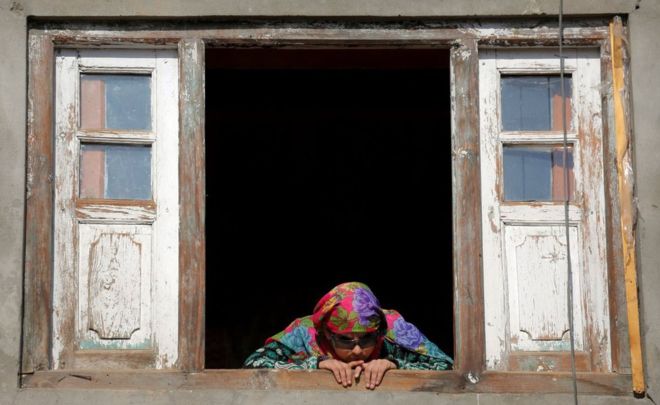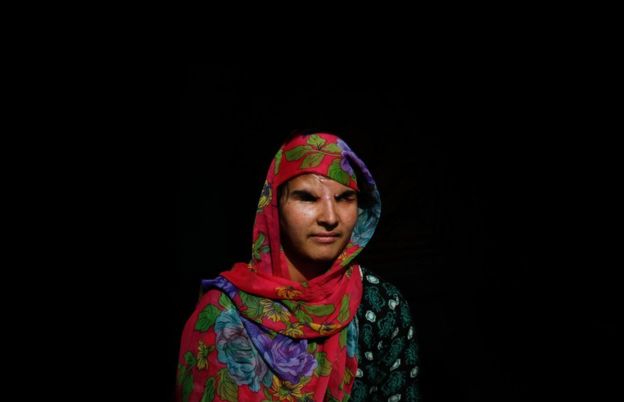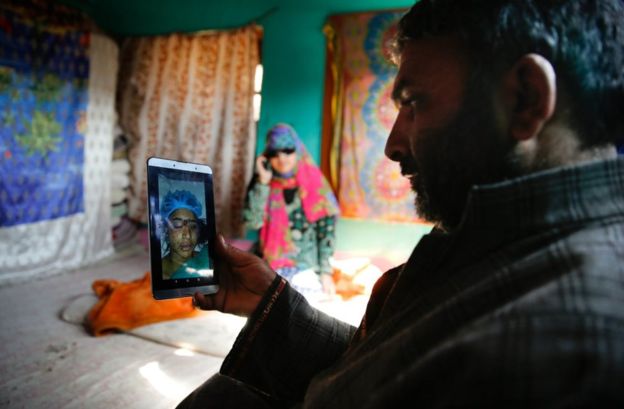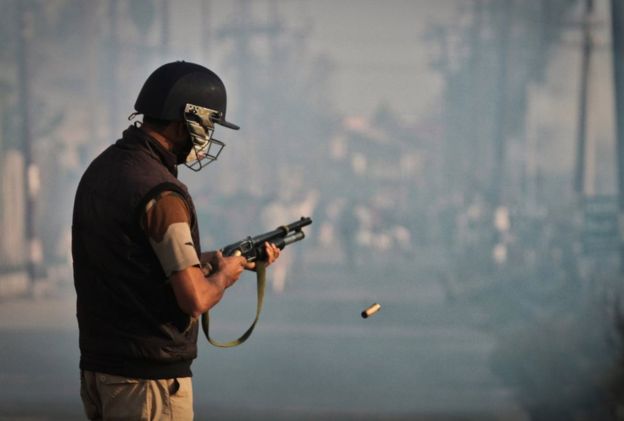
Photographer Abid Bhat here describes the life of 14-year-old Insha Mushtaq, who lost vision in both her eyes after being hit by pellets in Indian-administered Kashmir.
“I just want to ask the security personnel who fired pellets at me what my fault was,” Miss Mushtaq says, as she stands by the same window she was sitting at when pellets blinded her.
She has been in and out of hospitals for the past three months in an attempt to regain her vision. Nothing has worked so far, but she remains hopeful.

Ms Mushtaq says she wanted to become a doctor before losing her vision. She brings out her text books to show me, and flips the pages though she cannot read them anymore. “I can only feel them now,” she says tearfully.
Concern in Kashmir over police pellet guns
Photoshopped celebrities used for Kashmir pellet gun campaign
She also shows me a school photo identity card.


The continuing unrest in Indian-administered Kashmir has seen the deaths of 89 civilians with thousands injured.
India blames Pakistan for stirring up violence in the region, a charge that it denies. Both countries claim Kashmir in its entirety but only control parts of it.
The region has been a flashpoint for more than 60 years, sparking two wars between the countries.
Within the Muslim-majority territory, some militant groups have taken up arms to fight for independence from Indian rule or a merger with Pakistan.
And the widespread use of pellet guns to quell protests in recent months has led to more than a thousand people sustaining eye injuries.

Pellet guns – a form of shotgun – were first used by the police as a non-lethal weapon to quell protests in Indian-administered Kashmir in 2010. They are normally used for hunting animals.
The gun fires a cluster of small, round-shaped pellets, which resemble iron balls, at high velocity.
A pellet gun cartridge can contain up to 500 such pellets. When the cartridge explodes, the pellets disperse in all directions.
They are less lethal than bullets but can cause serious injuries, especially if they hit the eye.
Doctors treating pellet gun wounds in Kashmir told the Indian Express newspaper they were seeing “sharp and more irregular-shaped pellets” which were causing “more damage” this time.

Miss Mushtaq’s family is struggling to come to terms with her injuries.
Her mother bursts into tears as a family member helps Ms Mushtaq don a scarf and sunglasses to hide her eyes and scarred face.
“If she was killed, I would have been able to overcome the grief but the sight of her blinded eyes kills me every day,” her father says as he shows me pictures of her daughter in the hospital ICU.

As for Miss Mushtaq herself, she is trying to stay positive.
She greets every guest coming to enquire about her health with a smile, drinks her tea and tries to console her family members and relatives.
Later, she goes out for a walk with some of her relatives, smile still intact.
But, for her and many others like her, it is going to be a long and difficult road ahead.
Source: BBC.com
